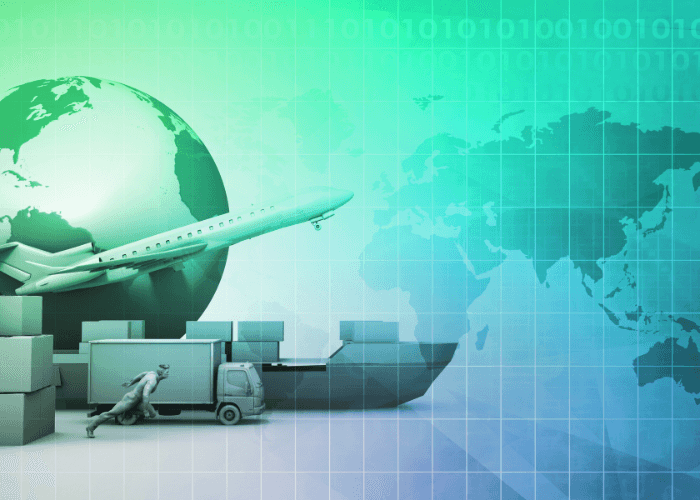What is Causing Supply Chain Issues 2022?
By Randy Breneman on Thursday, September 15, 2022Delays and shortages in the supply chain have made things increasingly difficult for field service companies. Learn the causes and how to mitigate them.
What Is a Supply Chain?
A supply chain is a network of suppliers and manufacturers that work together to produce and deliver a final product or service. The different parts of the supply chain includes suppliers, who provide raw materials; manufacturers, who transform those raw materials into finished products; distributors, who get the products to retailers; and retailers, who sell the products to consumers.
Each part of the supply chain is important in getting the final product to the customer. For example, if a supplier does not provide quality raw materials, the manufacturer will not be able to produce a high-quality product.
Similarly, if a retailer does not have a good relationship with its distributors, it may not be able to get the products it needs in a timely manner. Therefore, each part of the supply chain must work together in order for the final product to be successful.
How Did It Happen?

The supply chain issues in 2022 can be traced back to a number of factors. First, the COVID-19 pandemic disrupted manufacturing and logistics operations around the world. This led to a shortage of raw materials and components, as well as delays in the delivery of finished goods.
In addition, the US-China trade war created tensions and uncertainty in the global supply chain. As a result, companies began stockpiling inventory in an effort to avoid disruptions. However, this hoarding of inventory led to even more disruptions when manufacturers were unable to keep up with demand.
Lets not forget about the war in Ukraine and the Russian ships and sea mines that block the Black Sea port. Only about 15-20 percent of Ukraines 6 million monthly agri-commodities can be exported by means other than the Black Sea (rail, rivers, trucks). Also, the trade risks due to the extensive sanctions on Russian exports by various trade partners and banks has led to price spikes and supply chain disruptions. Read more on this at brookings.edu.
The combination of these factors has resulted in severe shortages of many products, including semiconductors, computer chips, and car parts. The good news is that some companies are beginning to adapt their operations to better deal with these challenges. However, it will likely take some time for the supply chain to fully recover.
Since the pandemic began, there have definitely been some improvements with global shortages, but other concerns have began to arise. There has been a downturn in consumer demand that has thrown economic growth into reverse which could lead to an alarming inventory pileup. For more on this, visit Bloombergs article on the supply chain.
Truck Driver Shortages

As the world continues to grapple with the ongoing pandemic, many industries are facing shortages of key supplies and personnel. One industry that has been particularly hard hit is trucking. Truck drivers are essential for keeping the supply chain moving, but the industry is currently facing a severe shortage of drivers.
There are a number of factors that have contributed to the driver shortage. First, the pandemic has resulted in increased demand for goods as people stock up on supplies. This has led to more shipments and a need for more drivers. At the same time, many drivers have been forced to stay home due to illness or quarantine, further exacerbating the shortage. In addition, some drivers have simply chosen to leave the industry due to the long hours and stressful work conditions.
The driver shortage is having a ripple effect throughout the entire supply chain. Companies are facing delays in shipments, and some are even having to cancel orders altogether. The situation is likely to continue until the driver shortage is resolved.
In the meantime, companies will need to find ways to cope with the challenges posed by the shortage.
How Supply Chain Issues Impact Businesses and Consumers?

The current pandemic has exposed a number of vulnerabilities in the global supply chain. Businesses have been forced to confront the reality that just-in-time inventory and lean manufacturing practices have left them ill-prepared to deal with disruptions.
Meanwhile, consumers have been confronted with shortages of essential goods and disrupted delivery schedules. Take the infant formula shortage for example. Due to supply chain issues and the recent recall of several infant formula products, infant formula shortages have been reported. It has been extremely difficult for some families to get the necessary formula for their newborn babies. The U.S. government and other partners are working toward ensuring infant formula is safe and available for families across the country.
Businesses on the other hand have other challenges to face. They have had to contend with shutdowns, layoffs, and plummeting sales, while consumers have grappled with higher prices, empty shelves, and frustration. In the months to come, it is likely that the impact of these disruptions will continue to be felt by businesses and consumers alike.
Despite the challenges, there are also opportunities for businesses to improve their supply chains and for consumers to become more resilient. By working together, businesses and consumers can weather this storm and emerge stronger on the other side.
Mitigating the Effects of the Supply Chain Shortage
As the COVID-19 pandemic continues to cause disruptions around the world, businesses are struggling to keep up with the demand for goods and services. One of the most significant challenges facing companies is the shortage of supplies in the global supply chain. This shortage can have a profound impact on businesses, causing delays in production, increased costs, and reduced customer satisfaction.
However, there are some strategies that companies can use to mitigate the effects of the supply chain shortage. For example, companies can focus on building relationships with suppliers, increasing inventory levels, and diversifying their supplier base.
Building relationships with suppliers starts with talking regularly and honestly. Good business-to-business relationships rely on strong, two-way communication. If it is possible, meeting face-to-face with suppliers or their representatives will be the best way to improve on the communication aspect. Returning defective goods, paying your accounts on time, and avoiding unrealistic demands for products or services are all good places to start. Constantly changing or rushing orders will frustrate your suppliers. If this is the nature of your business, make sure you are clear from the beginning.
Keep reading for more suggestions on how companies can improve their supply chain management.
What Can Companies Do?

In today’s economy, supply chain management is more important than ever. Companies rely on a complex network of suppliers to provide the raw materials and components they need to produce their products.
When one link in the supply chain breaks down, it can have a ripple effect that disrupts the entire operation. This is especially true in industries with just-in-time production, where even a short disruption can cause costly delays. To avoid these types of disruptions, companies need to be proactive in managing their supply chains.
Here are some common strategies that companies use to avoid supply chain shortages:
- Diversifying suppliers: Having multiple suppliers for each component helps to ensure that if one supplier has an issue, there are others that can pick up the slack.
- Building inventory: Maintaining an inventory of key components helps to cushion against disruptions in the supply chain.
- Developing alternate sources: Working with suppliers to develop alternate sources of raw materials or components can help to minimize the impact of disruptions.
By taking these measures, companies can help to avoid the costly consequences of supply chain disruptions.
Supply Chains in 2022 and Beyond?
As the world becomes increasingly interconnected, the health of the global economy can have a major impact on supply chains. In recent years, we’ve seen this play out in a number of ways.
For example, when demand for a product decreases in one part of the world, it can lead to layoffs and plant closures in another part of the globe. This is because many manufacturers source their components from a variety of suppliers located around the world.
Similarly, an increase in tariffs can raise the cost of goods and make them less competitive in global markets. As a result, it’s important for businesses to closely monitor the health of the global economy and adjust their supply chains accordingly.
Looking ahead to 2022 and beyond, there are a number of factors that could impact the global economy.
- Brexit negotiations could cause disruptions to trade flows between the UK and the EU.
- Tensions between the US and China could lead to an escalation of tariffs and other trade barriers.
- Rising interest rates could put pressure on economies that are heavily reliant on debt.
- Potential railroad worker strike.
Any one of these factors could have a significant impact on supply chains around the world. As a result, businesses need to be prepared for a variety of potential scenarios when planning their supply chains for 2022 and beyond.
How Is the Supply Chain Different
The global pandemic has had a profound effect on the supply chain. In the span of a few months, businesses were forced to adapt to rapidly changing conditions. Many manufacturers have had to reconfigure their production lines to meet rising demand for essential goods. At the same time, others have had to suspend operations due to shutdowns and supply shortages. As a result, the supply chain is now more volatile and unpredictable than it was just six months ago.
Businesses must be agile and adaptable in order to navigate this new landscape. Those that are able to successfully navigate the new challenges will be well-positioned to thrive in the post-pandemic economy. You might say that that time is now!
Does the Supply Chain Shortage Affect the Field Service Industry?

The current global pandemic has disrupted supply chains around the world, causing shortages of everything from medical supplies to electronics. This supply chain shortage is also having a major impact on the field service industry.
Field service companies rely on a steady supply of parts and equipment to keep their operations running smoothly. However, with manufacturers facing delays and shortages, it has become increasingly difficult for field service companies to get the supplies they need.
In some cases, this has led to service delays and cancellations. In others, field service companies have been forced to find alternative suppliers or use lower-quality substitutes. The supply chain shortage is therefore having a major impact on the field service industry, both in terms of operational efficiency and customer satisfaction.
How Will the Rise of Artificial Intelligence Impact Supply Chains in the Future?

As artificial intelligence (AI) continues to evolve, businesses are starting to explore how they can use this technology to improve their supply chains. By harnessing the power of AI, businesses will be able to gain a better understanding of their customers’ needs and preferences, as well as the nuances of their supply chains. This will allow businesses to optimize their inventory levels and reduce waste, ultimately leading to a more efficient and cost-effective supply chain.
AI can also be used to develop predictive models that can identify potential problems before they occur. This will enable businesses to address issues before they cause disruptions, ensuring a smooth and uninterrupted flow of goods and materials.
As AI continues to become more sophisticated, it will transform the way businesses manage their supply chains, creating a more efficient and responsive system that is better equipped to meet the ever-changing needs of customers.
Closing Thoughts
As we move through 2022, it’s important to take stock of the progress made in the supply chain industry and set our sights on the challenges that lie ahead. While there have been significant advancements in technology and process optimization, there is still room for improvement when it comes to visibility and collaboration.
In the coming year, we need to focus on streamlining data collection and sharing, so that everyone involved in the supply chain can have a clear understanding of what’s happening at every step. This will be critical to ensuring efficient operations and avoiding costly delays.
We also need to continue working on ways to reduce waste and increase sustainability. With the right mix of innovation and dedication, I’m confident that we can make 2023 a breakout year for the supply chain industry.
If you are in the field service industry and want to reduce waste and streamline your business, then field service software could help. Smart Service offers both cloud software and desktop software that eliminates double data entry and the need for paper. It streamlines everyday work processes like scheduling, routing, and dispatching. Create work orders and invoices with data you already have in Quickbooks. With the Smart Service mobile app iFleet your company can further empower your technicians by giving them the ultimate field service tool . Stay ahead of your competition and try a free demo today!


